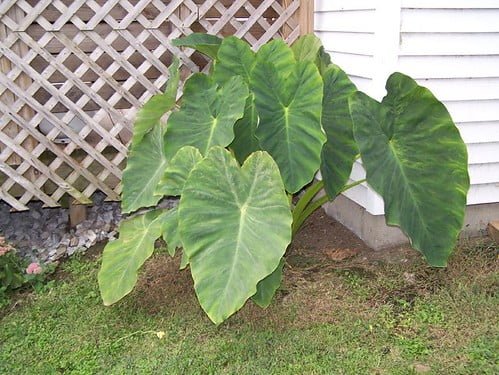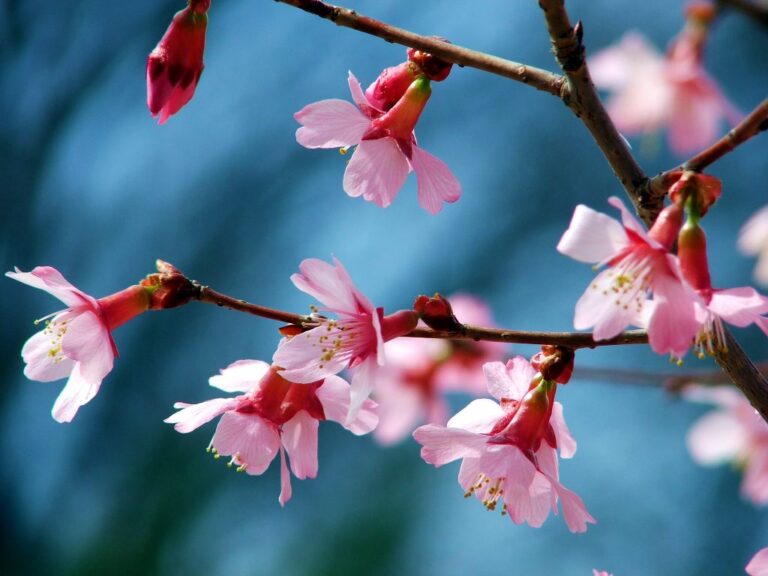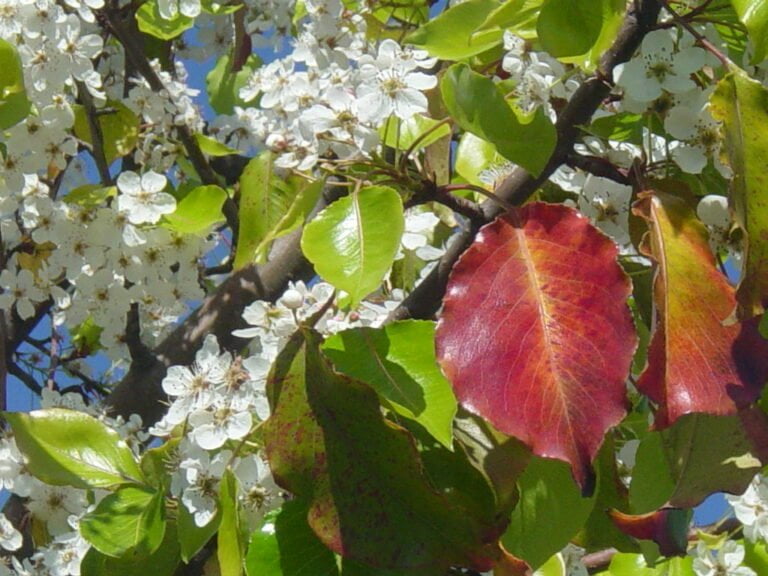Exploring the Unique Tree With Huge Heart-Shaped Leaves
Explore the enchanting world of a tree with massive heart-shaped leaves, beckoning you to discover its hidden wonders. Step into a realm where nature’s beauty intertwines with awe-inspiring adaptations. This unique tree, a symbol of resilience and harmony, thrives in diverse habitats and plays a vital role in the environment. Uncover its cultural significance and learn how to care for this majestic species. Join us as we delve into the captivating journey of exploring this extraordinary tree with a heart that beats in unison with yours.
Tree Description
Take a close look at the tree, which boasts an abundance of large, heart-shaped leaves. This unique tree, known as the Heartleaf Tree, is a sight to behold. Standing tall and proud, its branches stretch outwards, providing shade and shelter for all who seek refuge beneath its majestic canopy. The leaves, vibrant green in color, are soft to the touch, and their heart-shaped form evokes a sense of warmth and love. As you run your fingers along the edges of the leaves, you can’t help but feel a connection to nature and the beauty it encompasses. The Heartleaf Tree is not only visually stunning but also serves a purpose in serving others. Its leaves provide a natural habitat for various species of birds and insects, creating a harmonious balance in the ecosystem. Just being in the presence of this magnificent tree fills you with a sense of serenity and reminds you of the importance of nurturing and serving others.
Leaf Characteristics
As you continue your exploration of the Heartleaf Tree, you will notice that its heart-shaped leaves possess distinct characteristics. These leaves are vibrant green, symbolizing life and renewal. They are glossy and smooth, reflecting the sunlight and creating a mesmerizing effect. The edges of the leaves are slightly serrated, adding a touch of uniqueness to their shape. When you touch the leaves, you will feel their soft and velvety texture, like the gentle caress of a loved one. The size of the leaves is also remarkable, as they can reach up to 12 inches in width, providing ample shade and shelter for creatures seeking refuge beneath their embrace. The Heartleaf Tree’s leaves truly embody the spirit of love, protection, and nurturing, making it a perfect companion for those who desire to serve others.
Tree Habitat
You will frequently find the Heartleaf Tree thriving in diverse habitats, showcasing its adaptability and resilience. This remarkable tree has the ability to grow in various environments, making it a symbol of strength and endurance. From dense forests to open grasslands, the Heartleaf Tree can be found providing shade and shelter to countless organisms. It is not uncommon to see these majestic trees standing tall and proud in both temperate and tropical regions. Their extensive root systems allow them to withstand harsh weather conditions, such as strong winds and heavy rainfall. Whether it’s in a mountainous region or along a coastal shoreline, the Heartleaf Tree continues to flourish, offering its beauty and benefits to all who encounter it.
Unique Adaptations
The Heartleaf Tree showcases unique adaptations that contribute to its ability to thrive in diverse habitats. One of these adaptations is its deep root system, which allows it to access water sources even in arid environments. These roots also help anchor the tree during strong winds, preventing it from toppling over. Additionally, the Heartleaf Tree has the ability to tolerate a wide range of soil conditions, from sandy to clayey, making it resilient in various landscapes. Another remarkable adaptation is its waxy, heart-shaped leaves, which serve as a protective layer against excessive moisture loss. This feature enables the tree to withstand dry spells and conserve water during periods of drought. The Heartleaf Tree’s unique adaptations not only enhance its survival but also contribute to the ecosystem by providing shelter and food for various organisms.
Tree Species and Varieties
This extraordinary tree, known as the Philodendron bipinnatifidum, belongs to the Araceae family and is native to the tropical regions of South America. There are several different species within the Philodendron genus, each with its own distinct characteristics. The most common variety is the Philodendron selloum, which features deeply lobed leaves and can grow up to 15 feet tall. Another popular variety is the Philodendron xanadu, known for its compact size and bushy appearance. Both varieties thrive in warm, humid environments and make stunning additions to indoor or outdoor spaces. Whether you choose the selloum or xanadu, these heart-shaped beauties are sure to bring joy and beauty to any setting.
Growth and Development
Moving forward in our exploration of the unique tree with huge heart-shaped leaves, let’s delve into its growth and development. This extraordinary tree exhibits remarkable growth patterns that captivate the hearts of those who encounter it. As the tree takes root, it begins its journey towards becoming a majestic presence in the landscape. Its slender trunk extends upward, reaching for the sky with unwavering determination. With each passing year, the tree’s branches multiply and expand, forming a lush canopy that provides shade and shelter to all who seek solace beneath it. The leaves, vibrant and abundant, symbolize the tree’s vitality and resilience. They grow larger and more heart-shaped with each passing season, reminding us of the tree’s immense capacity to nurture and serve others. Witnessing the growth and development of this magnificent tree is a testament to nature’s ability to inspire and provide for those in need.
Environmental Importance
To understand the environmental importance of this unique tree, you must appreciate its significant role in sustaining local ecosystems. The tree’s large heart-shaped leaves provide shade and shelter for a diverse array of wildlife, such as birds, insects, and small mammals. These animals rely on the tree for protection from predators and extreme weather conditions. Additionally, the tree’s leaves act as a natural canopy, preventing excessive sunlight from reaching the forest floor and allowing for the growth of shade-loving plants. The tree’s deep roots help to stabilize the soil, preventing erosion and protecting nearby water sources from pollution. Moreover, the tree’s flowers attract pollinators, such as bees and butterflies, contributing to the overall health and biodiversity of the ecosystem. By supporting the tree’s growth and preservation, you are directly contributing to the well-being of the local environment and the creatures that depend on it.
Cultural Significance
The tree’s cultural significance lies in its deep-rooted connections to local traditions and beliefs. For centuries, communities have revered this majestic tree for its symbolism of love, compassion, and unity. Its heart-shaped leaves are seen as a representation of the collective heart of the community, reminding people of the importance of kindness and empathy towards one another. During special occasions and festivals, the tree becomes a focal point for celebrations, adorned with colorful ribbons and offerings. People gather around it to pray, sing, and dance, fostering a sense of togetherness and harmony. Its presence in religious ceremonies and rituals further reinforces its significance in spiritual practices. The tree’s cultural importance extends beyond its physical beauty, serving as a powerful reminder of the values and traditions that bind a community together.
Maintenance and Care
To properly maintain and care for this unique tree with huge heart-shaped leaves, you need to provide it with regular watering and appropriate pruning. Watering is crucial for the tree’s health, especially during dry spells. Ensure that the soil is moist, but not waterlogged, as excessive moisture can lead to root rot. Pruning is essential to maintain the tree’s shape and promote healthy growth. Remove any dead or damaged branches, as well as any branches that are crossing or rubbing against each other. This will improve air circulation and prevent the spread of diseases. Additionally, consider fertilizing the tree during the growing season to provide it with essential nutrients. By following these maintenance and care practices, you will help your unique tree thrive and continue to enchant with its beautiful heart-shaped leaves.
Tree Conservation Efforts
Your efforts in conserving the unique tree with huge heart-shaped leaves will have a significant impact on its preservation. The conservation of this extraordinary tree is crucial to maintaining its beauty and ecological importance. By actively participating in tree conservation efforts, you are contributing to the preservation of a species that provides numerous benefits to the environment and communities. Through initiatives such as tree planting, habitat restoration, and public awareness campaigns, we can ensure the survival of this remarkable tree for future generations. Your dedication and passion in serving others by protecting this tree will help create a sustainable environment that fosters biodiversity and enhances the well-being of all living beings. Together, let us join hands in safeguarding this precious gift from nature.
Conclusion
In conclusion, the unique tree with huge heart-shaped leaves is a remarkable and enchanting sight to behold. Its distinctive leaf characteristics and ability to adapt to various habitats make it a truly remarkable tree species. Not only does it hold significant environmental importance, but it also holds cultural significance in many communities. It is essential that we continue to appreciate and care for this extraordinary tree, as well as support conservation efforts to ensure its survival for future generations.






